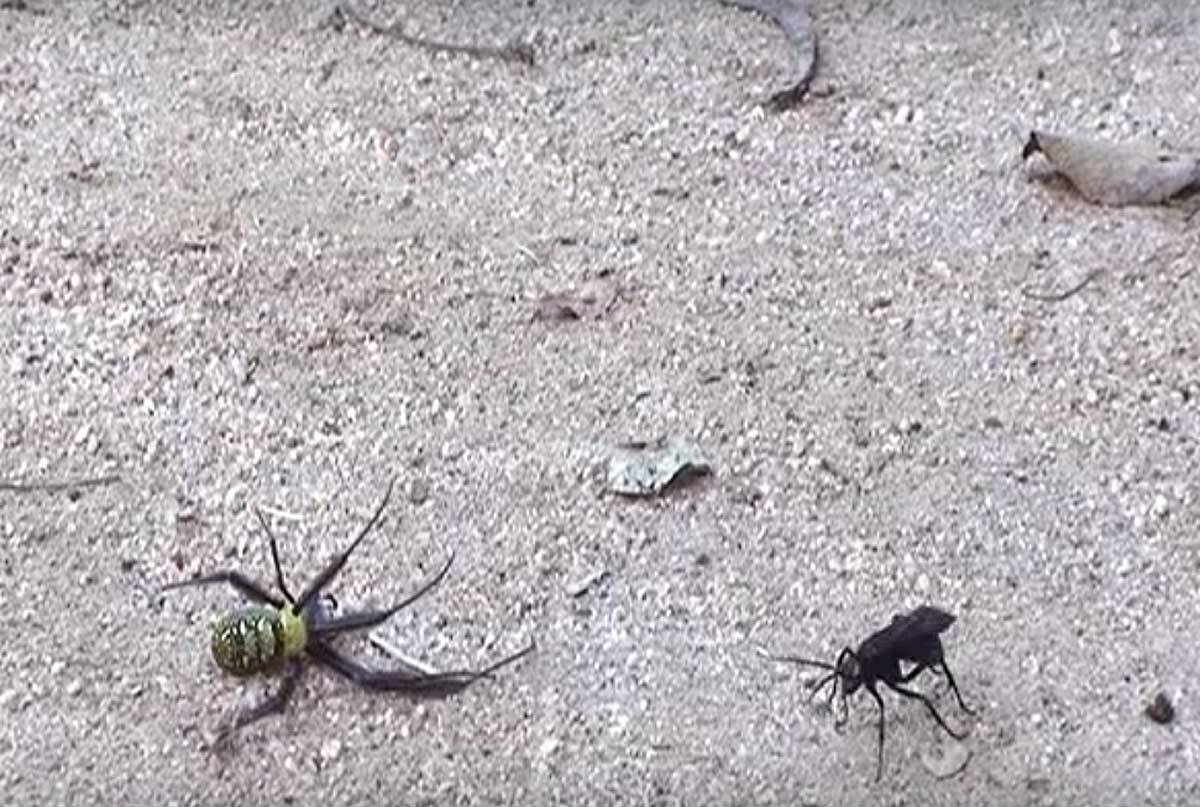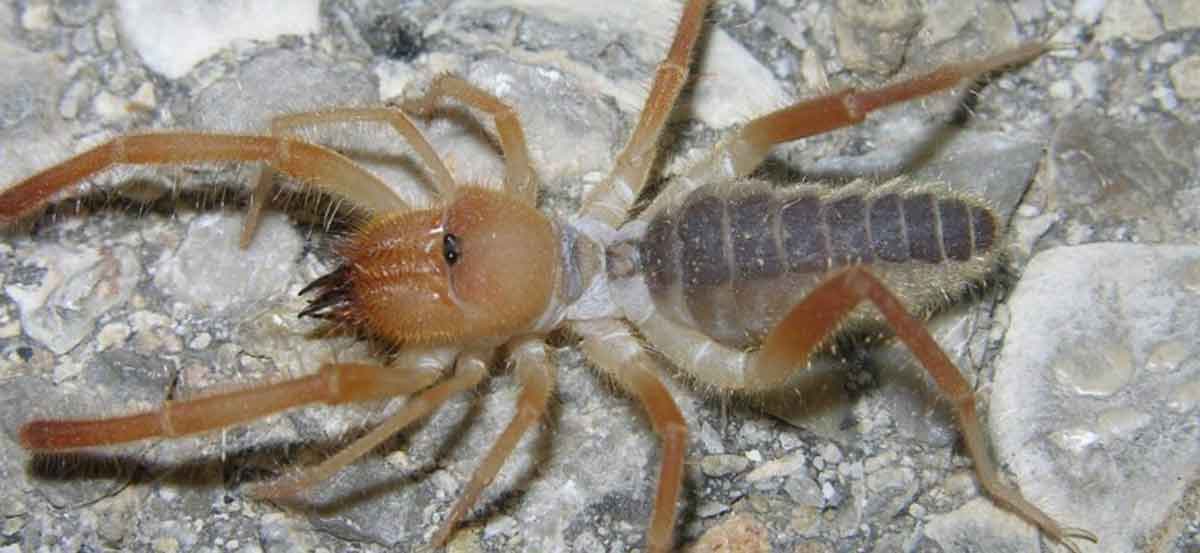In the wild, we focus on finding the apex predators and rejoice when we spot the almighty carnivores executing well-planned kills. Their gory feasts and kill tactics are nothing short of callous, and observing these top-of-the-food-chain predators shredding crimson flesh is always a rather primitive experience. But, these large carnivores have nothing on the heartless kill tactics employed by those bugs and critters at ground level, where the fight for existence is tough and brutal. The ground dwellers are generally harmless to humans, but there are insects that have far crueller ways of devouring prey than our big cats. These are the insects and arachnids that liquefy their prey’s flesh, turn internal organs into mushy juice and paralyse victims. Their murderous modus operandi.
If there’s a jostle for the most psychopathic insects to spot on safari, these 3 would surely win.
The Spider Hunting Wasp
The spider-hunting wasp is not just any wasp. This guy behaves like a serial killer and puts Jeffrey Dahmer to shame when it comes to feeding and laying its eggs. To us humans, these low-flying long-legged wasps are non-aggressive and harmless; but the spiders they’re the feared enemy. Easily identifiable by their black bodies and occasional aposematic markings, these wasps are fascinating to observe – especially when they find their chosen spider.
Here’s why they’re fascinating, cruel and ingenious all at the same time. These wasps are solitary and hide out in burrows, which are also their nesting areas – and dungeons. Spider hunting wasps seek out their arachnid victims and then promptly inject a potent venom than physically paralyses them – but in a cruel twist, the spider is actually still alive. It’s tricky to fight off a spider-hunting wasp because of its ability to manoeuvre so quickly. These wasps are like mini-helicopters, hovering above their spider, just waiting for the perfect time to strike.
The wasp subsequently drags its full compos mentis but immobilised prey to its burrow where it lays a single into the abdomen. The wasp ensures the burrow is closed, and its victim cannot escape.
It gets worse.
After 10 days or so, the larva inside the spider’s abdomen begins to hatch and begins feeding on the inside of the spider. At this stage, the spider is still alive! The youngin’ basically eats its way out of the spider, then spins a cocoon and emerges from the burrow as a fully-fledged adult, ready to make a kill of its own.
Steven King would have a field day creating a script based on the antics of the ever-fascinating spider-hunting wasp. Do not fear this wasp, but do not bring a pet spider any circumstances.

The Assassin Bug
There are actually over 450 species of assassin bug found in South Africa, and they’re ubiquitous in Kruger. Guides and guests don’t give these bugs a second glance because they’re so widespread – and small in size and stature. The smaller millipede assassin bugs, along with a few others, are generally harmless to man. The larger and more tropical species can leave a nasty bite. These unusually cruel bugs certainly live up to their namesake and feel nothing for the pain and agony inflicted upon their victims. Their bloodthirsty, murderous ways will leave speechless – if not even mildly grossed out.
Why have we labelled the assassin bug as being such a menace? In short, this bug turns it victim’s insides into a mushy soup.
The assassin bug identifies its prey. It approaches, uses a sticky film on their limbs to trap prey, and then uses its poisonous saliva to paralyse its victim (bugs seem to like paralysing their prey!). The poison acts quickly and in an instant turns the victim’s innards into a mushy soup! Scores of bugs will then descend upon the “soup” to slurp up the meal. Hordes of bugs have the ability to overpower much larger prey, such as small rodents. When done with sucking out the insides, there remains nothing but an abandoned exoskeleton or unusual looking carcass.
The next time you wander down the path at camp and stumble across hollowed out millipedes, then it’s probably the work of our devilish assassin bugs!
wear the armour of others. Hello Hannibal Lecter, Texas Chainsaw Massacre.
And do you know what’s even worse? They prey on their own!
Solifugae/Camel Spiders/Sun Spiders
These strange looking creatures forming part of the Arachnida family, look like the missing link between a spider and scorpion. In fact, they’re neither spider nor scorpion. Their danger to humans is negligible, but these prehistoric looking creepy crawlies run at such a speed, and seem to be drawn to your shadow. They can leave a nasty bite on human flesh, but other than that they’re nothing more than scary looking cheetah-fast scurrying beasts.
So, why have we added the solifugae to this list of violent offenders? Camel spiders have the ability to inflict terrible pain upon insects, lizards and even small birds. They use their powerful saw-like jaws to capture their victims and turn them into small pieces by chopping and sawing through their bodies. Solifugaes have powerful digestive juices that help to liquify their victim’s flesh, which makes it easy to suck the remains into there stomachs.


